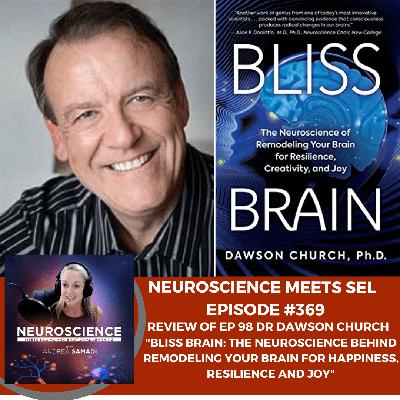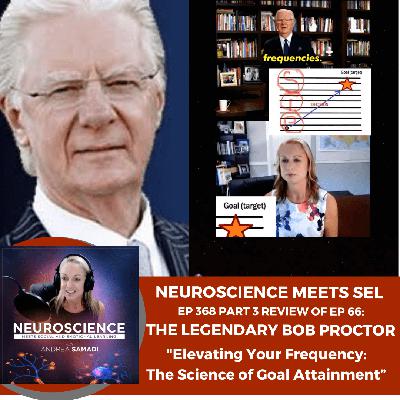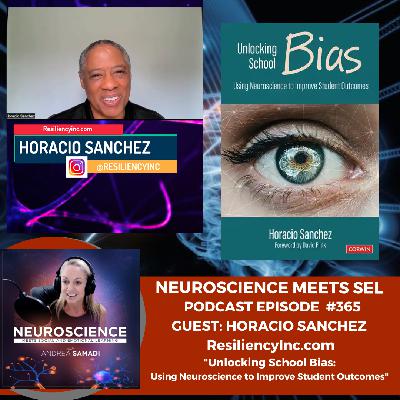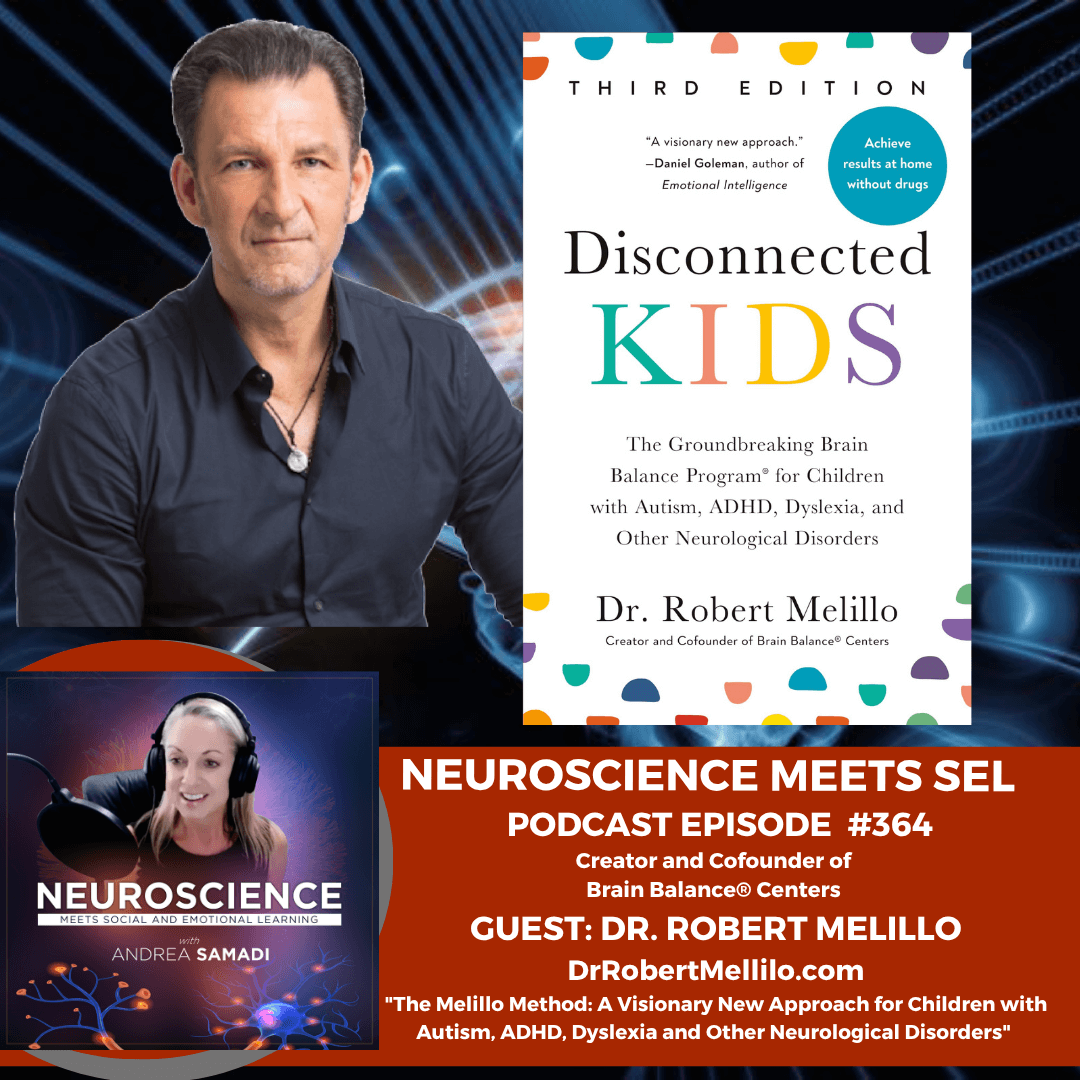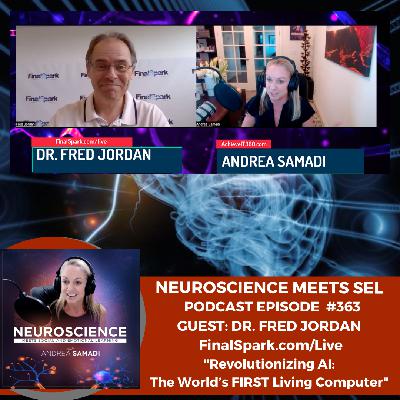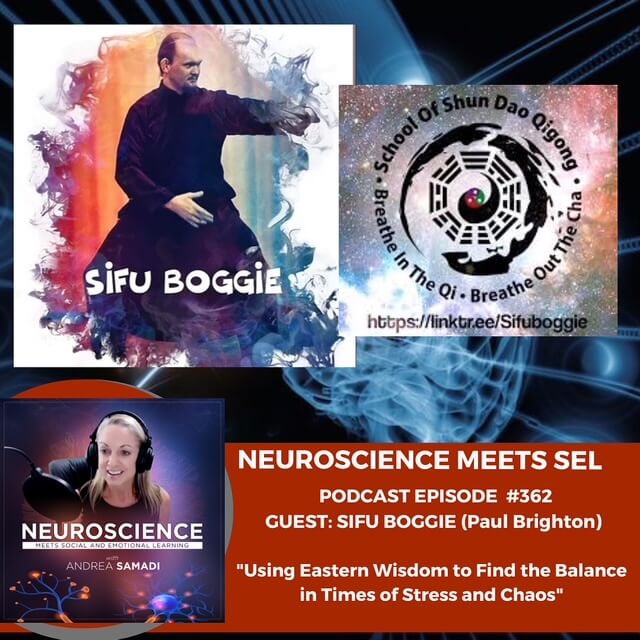Move, Eat, Connect: 3 Science-Backed Keys to Brain Health PART 2 with Dr. John Ratey
Description
In this Season 14 review (episode 376) Andrea Samadi revisits highlights from her interview with Dr. John Ratey about the science of exercise, nutrition, and social connection for brain health and longevity.
The episode explains Peter Attia's rule for foundational fitness, warns against sugar dependence and fat phobia, and presents the three biggest levers for healthy aging: exercise, diet, and social connection, plus practical tips to track and apply these habits.
Takeaway: prioritize consistent movement, whole foods, and meaningful connection to boost mood, memory, and overall well-being.
On today's episode #376, we review PART 2 of our 2021 interview with Dr. John Ratey and will learn:
✔ 3 Science-backed keys to brain health: Exercise, Nutrition and Connection
✔ What is Attia's Rule that allows us to dive deep into diet and nutrition?
✔ Practical Tips for improving consistent movement, our diet and social connection to boost overall well-being and brain health.
Welcome back to SEASON 14 of The Neuroscience Meets Social and Emotional Learning Podcast, where we connect the science-based evidence behind social and emotional learning and emotional intelligence training for improved well-being, achievement, productivity and results—using what I saw as the missing link (since we weren’t taught this when we were growing up in school), the application of practical neuroscience.
I’m Andrea Samadi, and seven years ago, launched this podcast with a question I had never truly asked myself before: (and that is) If productivity and results matter to us—and they do now more than ever—how exactly are we using our brain to make them happen?
Most of us were never taught how to apply neuroscience to improve productivity, results, or well-being. About a decade ago, I became fascinated by the mind-brain-results connection—and how science can be applied to our everyday lives.
That’s why I’ve made it my mission to bring you the world’s top experts—so together, we can explore the intersection of science and social-emotional learning. We’ll break down complex ideas and turn them into practical strategies we can use every day for predictable, science-backed results.
Episode 376: PART 2 Featuring Dr. John Ratey
For today’s Episode 376, we continue with PART 2 of our review with Dr. John Ratey, covering the first health staple that we know is scientifically proven to boost our physical and mental health: exercise. We first met Dr. Ratey on Episode 116[i] (back in March 2021) on his book “The Revolutionary New Science of Exercise and the Brain.” Dr. Ratey is also an Associate Clinical Professor of Psychiatry at Harvard Medical School and an internationally recognized expert in Neuropsychiatry.
Dr. Ratey has published over 60 peer-reviewed articles and 11 books in 17 languages.
You’ll notice that around the time of the pandemic, in 2020, our interviews took a turn towards health and wellness, and to stay on track, I created a framework of our Top 5 Health Staples on Episode 87[ii], which eventually evolved into our Top 6 Health Staples.
🎧 Listen to Episode 87:
The Top 5 Brain Health and Alzheimer’s Prevention Strategies[iii]
🌐 Learn more about Dr. Ratey:
www.johnratey.com
We also did a Deep Dive into Dr. Ratey’s books
🎧 Listen to Episode 118[iv]:
A Deep Dive into Dr. Ratey’s books, Spark, Go Wild and Driven to Distraction.
Before we go into Dr. Ratey’s first clip, with the thoughts of debating diet plans or supplements, (a broad and deep topic) Dr. Peter Attia[v] the author of the book The Science and Art of Longevity suggests we first get our “exercise house in order.” He argues that until we can do the following, our time is better spent building foundational fitness. For those of us who want to dive into this topic, he asks us to do the following, which has been coined as: Attia’s Rule.
Dead hang for 1 minute
Wall sit for 2 minutes
Deadlift your body weight for 10 reps
Achieve a VO₂ max at or above the 75th percentile
As Dr. Attia explains, conversations about nutrition are premature until these core physical metrics are met. I keep these metrics in mind for myself as well as for those I’m seeking advice from (who haven’t written books, or done extensive research in this area).
I tested the criteria out myself back on EP 252[vi] “Using Neuroscience to Improve Fitness, Longevity and Overall Health” 3 years ago. Looking at these numbers now, my VO2 max is the same, I can still dead lift my body weight, and wall sit for 2 minutes, but dead hang for 1 minute, I’m not sure about. I’ll need to try this one to see if I can still do this. Can you do these items suggested by Peter Attia?
Peter Attia calls exercise the "single biggest elixir for brain health"[vii] because of its wide-ranging impact on numerous bodily systems, including glucose disposal, insulin sensitivity, and inflammation. While sleep and nutrition are also crucial, Attia argues that exercise's ability to positively affect so many systems makes it the most powerful single intervention. He suggests that just three hours of exercise a week is beneficial, with seven hours offering even greater rewards. It is surprising if you have the ability to track your workouts to know this number. Since I’m a huge fan of Dr. Attia’s work, and use exercise to stay on track with mental and physical health, I was surprised when I asked my Whoop device to see exactly how many hours/week I was actually logging on this important health staple.
I’m above what Dr. Attia suggests most weeks when I can fit it in. Do you know how many hours each week you spend exercising? Remember: it doesn’t have to be intense exercise to get your heart rate moving. A 30-minute walk really does move the needle for our health and wellness.
Certain wearable devices like Whoop can now measure your age, based on your activity level and certain algorithms. We will cover our interview with Whoop’s Kristin Holmes on a future review, but for now, measuring these metrics can show you in real time whether your activity is helping you to turn back the hands of time, or move it forward.
WHOOP Age, a metric provided by the WHOOP[viii] fitness tracker, is calculated based on a proprietary algorithm that takes into account various health and fitness data.
Data Considered:
Sleep duration and consistency
Heart rate data (including time spent in different heart rate zones)
Strength training activity
Steps
Resting heart rate
VO2 Max (estimated)
Lean body mass (if available)
Algorithm:
The algorithm uses these data points to estimate a physiological age that reflects the user's overall health and fitness level. This number is based on research into healthy aging and mortality risk factors.
Just by watching these numbers, and making sure I’m getting enough sleep and exercise, I’ve been able to move my aging needle back 4.3 years younger.
Which takes us to our first clip, where Dr. Ratey covers the topic of fat phobia (related to our diet) in the United States. He says:
“In the U.S. we have what we call fat phobic. You know that fats were bad. Cholesterol, high cholesterol is killing us…that we should avoid fats and eat sugar or eat glucose and starch. And this has led to where we are at now where we have the obesity crisis and the diabetes type 2 crisis and heart disease and Alzheimers …it makes us less healthy to pack on all the glucose that we eat. We love it. We’re addicted to it and we have to bring that under control. And like your friend with the keto diet (Jason Wittrock from EP 94[ix]) that’s a radical departure from our current dietary preferences. Think about it…all of the quick foods. The foods that are so inviting (potato chips, Doritos, all that stuff is carbs.”
Dr. John Ratey on Fat, Sugar, and Modern Nutrition
In this first clip, Dr. Ratey discussed how, in the U.S., we’ve developed a fear of fats while embracing sugar and processed carbs.
“In the U.S., we have what we call ‘fat phobic.’ We thought fats were bad—cholesterol was killing us—and that we should avoid fats and eat glucose and starch. This has led to where we are now: obesity, type 2 diabetes, heart disease, and even Alzheimer’s.”
He emphasizes that our addiction to sugar and preference for quick, processed foods and snacks have contributed to today’s major health crises. Ratey calls for a radical shift in dietary habits—similar to what Jason Wittrock discussed in Episode 94[x] —with the focus of bringing our glucose intake under control.
🧠 Practical Tips to Apply Attia’s and Ratey’s Insights
Get your “exercise house” in order.
Before debating which diet is best, make sure you’re moving consistently. Test yourself on Dr. Attia’s Rule:
Can you hang from a bar for 1 minute?
Can you wall sit for 2 minutes?
Can you deadlift your body weight for 10 reps?
How’s your cardiovascular fitness (VO₂ max)?
If not there yet—set small, measurable goals for each one and track your progress weekly.
Rethink your relationship with sugar.
Dr. Ratey reminded us that sugar is addictive and deeply embedded in modern diets. Start by:
Replacing one processed snack a day with a whole-food option (like nuts, fruit, or yogurt).
Using the “half rule”: fill only half your plate with carbs and balance the rest with protein and healthy fats.
We covered this topic on EP 2










